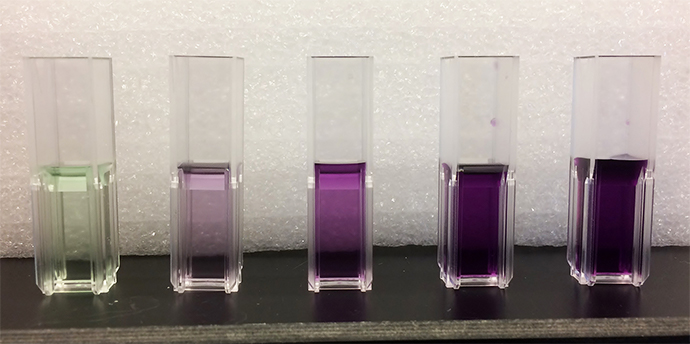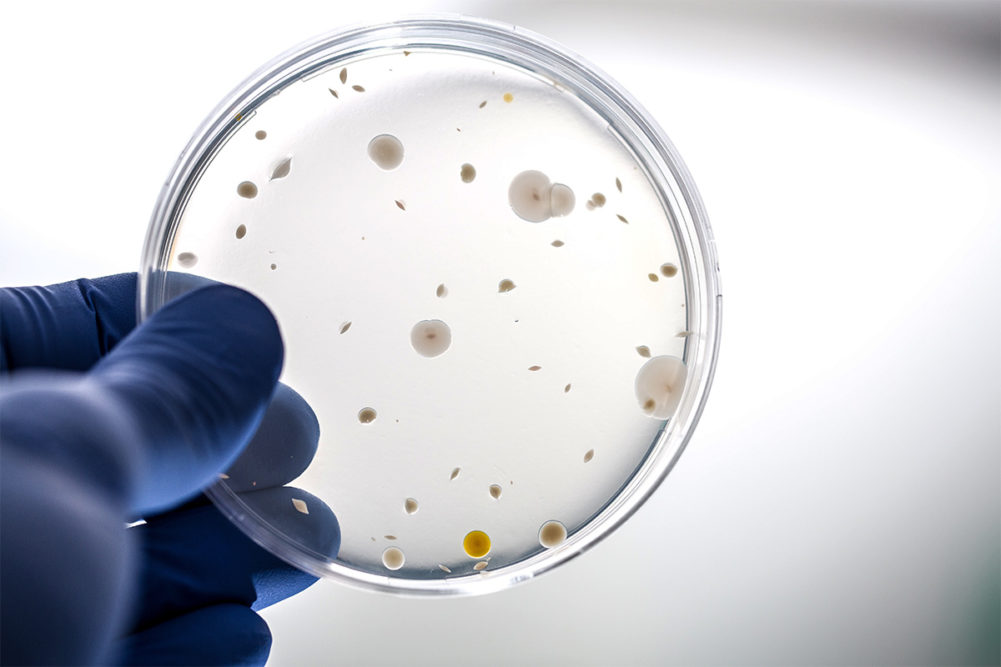WEST LAFAYETTE, IND. — Purdue University announced July 28 its researchers have developed a hard, metal surface that automatically kills bacteria upon contact. The surface is infused with naturally occurring antimicrobial peptides, Purdue explained.
This development, patented in tandem with the Purdue Research Foundation Office of Technology Commercialization, is applicable in a variety of food processing applications for cutting surfaces and other areas in which product is vulnerable to bacteria growth or attachment.
“When we create an oxidized metal surface with nanometer-wide and micrometer-deep cracks, peptides can be infused in these microscopic cracks with a simple wet process,” said David Bahr, head and professor of materials engineering at Purdue. “As an additional benefit, the process can color several metals, providing a visual indication of when the surface is no longer antimicrobial.”
Surfaces treated with these antimicrobial peptides were shown to perform better than untreated surfaces. Purdue has successfully demonstrated this method on stainless steel and titanium surfaces, and said the solution is also applicable for a wider range of metals.
During the oxidation process, treated surfaces will turn purple, which provides visual indication of antimicrobial degradation on the surface. This means processors will be able to easily tell when a treated surface needs to be retreated or has lost its antimicrobial properties.

“Our technology can help ensure that if a food processing facility was chopping salad greens, bacteria would not transfer from a contaminated surface to a cutting tool, thereby contaminating many more parts,” Bahr said. “When used in conjunction with food washing and other safe handling, this should allow fewer outbreaks of foodborne illness.”
Purdue said the treatment stored in the cracks of the metal will release over time, providing an extended antimicrobial resistance.
Read more about pet food safety on our Operations page.




